Differences in beachwear aside, Scottish and Australian production crews are basically the same – but the unionised working practices Down Under were a throwback, says Claire Mundell
Production company Synchronicity Films
Commissioners Piers Wenger; Charlotte Moore
Length 4 x 60 minutes
TX 30 September, BBC1
Executive producers Claire Mundell (Synchronicity); Liz Kilgarriff and Gaynor Holmes (BBC)
Director Glendyn Ivin
Producers Brian Kaczynski; Stuart Menzies
Writer Jacquelin Perske
DoP Sam Chiplin
Editor Alistair Reid
Script editors Lisa Baxter; Ruth Underwood
Post house Blazing Griffin
Claire Mundell
Executive producer
When I read Helen FitzGerald’s page-turner of a manuscript five years ago, I devoured it in one sitting.
Intense intrigue and suspense pulled me in from the first page. The Cry was an immediately uncomfortable but delicious read and I barely drew breath for several pages.
I felt instinctively that the story would make an amazing mini-series: it was a gut-wrenching and twisting thriller that started in the relatable domestic setting of motherhood.
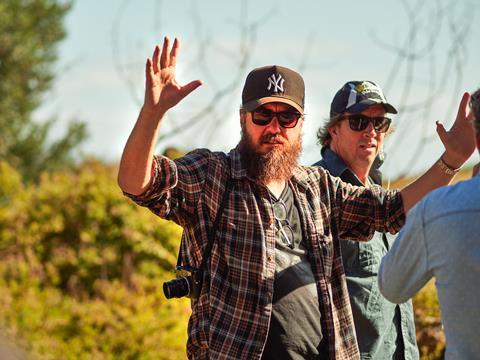
It had a key quality that scripted commissioners are always looking for: a new way into crime, using genre to explore our everyday fears. I was already familiar with Helen’s work, so I didn’t need convincing and immediately optioned the novel.
Finding a screenwriter was a short search as the excellent Sydney-based Jacquelin Perske immediately responded to the material, and we set off with script editor Lisa Baxter and BBC Drama on our four-year journey.
Always passionate that we would get the show made, I had been working on the financing in tandem with the last 18 months of script development.
We had to be ready to go when the greenlight came, so I had secured offers of deficit financing from five of the main international distributors. I opted for DRG because of the added value it brought – a strong first-look deal for Synchronicity.
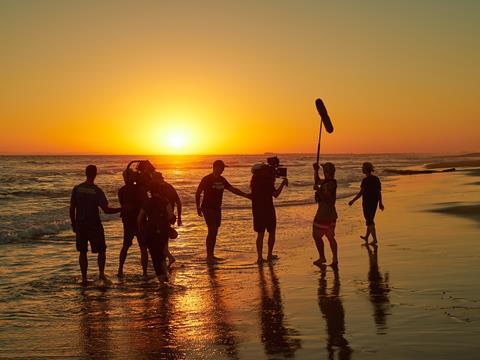
Next came the search for a producer to handle the logistical challenges of a story set in two worlds, and a director who could elevate the story on screen in a way that was compelling, emotionally engaging and visually stunning.
The supergroup of Jacquelin, producer Brian Kaczynski and director Glendyn Ivin was born, soon to be augmented by the wunderkind DoP Sam Chiplin, who was brought to the party by Glendyn, fresh from their collaboration on the compelling Australian drama series Safe Harbour.
Editorially, the challenge lay in telling a story across multiple timeframes in a way that would sustain intrigue, without confusing the audience – and always anchoring it in emotional truth. Equally, we had to keep the audience onside with a story that doesn’t shy away from the dire consequences our characters face.
Brian and I briefly considered using South Africa as a stand-in for Australia, but the potential benefits in terms of time zone and cost were outweighed by the authenticity of bringing the story to life in the country where it had originally been conceived.
Regular trips between the UK and Australia ensued. We recced the state of Victoria and secured our production partners on the ground.
Claire Mundell - My tricks of the trade
-
Be proactive in setting a consciously positive culture. It isn’t always possible but is always worth the try.
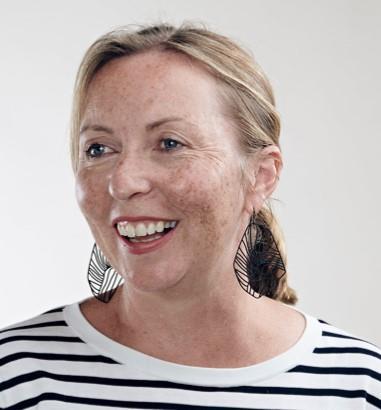
- Encourage people to take pride in their contribution and do the best work for themselves, and therefore the show.
- Create an inclusive environment.
- Consider every member of your team a programme-maker, bringing their own specialism to the group.
- Every designation is integral to the whole.
- Value the group intelligence and embrace collaboration.
- Do good work with good people.
- Make it an enjoyable journey, worthy of a great destination.
- Provide drinks at the very start, pre-shoot. Don’t underestimate the power of a free drink before the 16-hour days kick in.
In December Media, we found a solid partner who put together the most amazing Australian crew and ensured we were welcomed into the Melbourne production community.
Every morning brought a deluge of emails, but there was at least one upside: the writer on one side of the world could turn around script notes while the crew slept on the other.
At times, it was tricky to align the needs of the show with the different working practices in Australia. Their heavily unionised industry was a throwback to a bygone age in UK production.
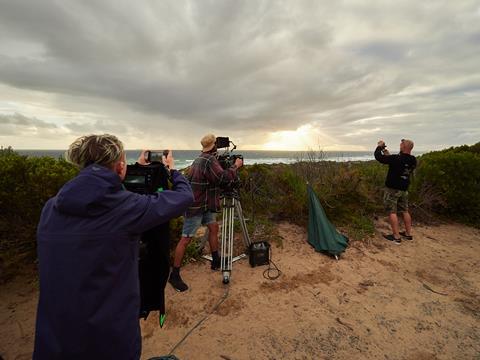
Wherever you go, production teams and crews are basically the same: the co-ordinator is the last to leave the building, the line producer is an excellent completer-finisher with red-rimmed eyes, and the catering is everyone’s primary concern. But there were some key differences.
The Australians sported the best line in beach ‘crew wear’ and, for the most part, took a ‘no worries’ approach. Unit bases by the beach and endless sunshine – two things not common to a Scottish shoot – might have something to do with it.
The Scottish crew had to do their best to hide the downsides of a Scottish shoot in ‘summer’ and speak more slowly on long, late-night conference calls. They still sent Tunnock’s caramel wafers as a show of support at the start of the Australian leg, proud to be pioneers in the creation of a new genre: ‘Scaussie Noir’.
CREATING A CINEMATIC EXPERIENCE
SAM CHIPLIN - Director of photography

From the very early stages of preproduction, Glendyn Ivin and I talked about the concept of environment and its effect on the psychology of our characters. We wanted Australia and Scotland to become characters in their own right, each with a unique feel and ability to add emotional depth to the story.
We began floating the idea of using anamorphic lenses and shooting the story in a 2:1 aspect ratio. These lenses are much wider than the traditional TV format and are normally only used in cinema. Their benefit is that they give you the opportunity to place a character in frame, while still ‘feeling’ the environment around them.
In theory, we could cut from a portrait in Scotland, then jump cut to a portrait in Australia, and we would know exactly where we were without having to establish the environment.

We were also able to utilise the unique way that the lenses render light. The horizontal flares created by the older, vintage lenses helped us bring focus to the harsh and ever-present Australian sunshine. As the psychological state of our protagonist degrades, the sunshine subtly transforms into something more hostile and unpleasant, creating a claustrophobic and anxiety-laden atmosphere.
MIDDLE GROUND
Given that traditional television uses a 16:9 aspect ratio and anamorphic lenses shoot 2.35:1, we wanted to find a middle ground between the two.
Popular Netflix shows such as The Crown, House Of Cards and Stranger Things had already begun using the 2:1 format, but it was (and still is) a relatively new format to television.
Glendyn and I approached producers Claire Mundell and Brian Kaczynski with the idea and they were immediately behind it. Audiences have all grown up watching classic films shot on anamorphic lenses and subconsciously, they have begun to view television as cinema.























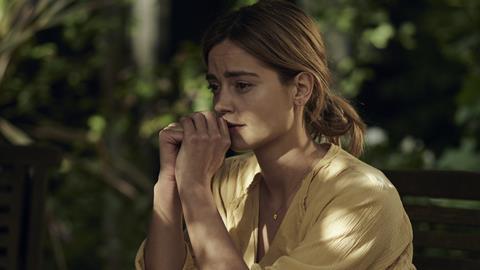






No comments yet